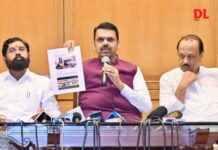
 Two-thirds of India’s more than 1.2 billion people are younger than 35 year old. Nowhere is the demand for jobs more acute, and the obstacles more formidable, than in rural areas, home to more than 70 per cent of India’s population, including the 450 households in this village.
Two-thirds of India’s more than 1.2 billion people are younger than 35 year old. Nowhere is the demand for jobs more acute, and the obstacles more formidable, than in rural areas, home to more than 70 per cent of India’s population, including the 450 households in this village.
In many ways, whoever went to college or technical school, are better off than those who live on the poorer side of the village, a 10-minute drive away. Most of their neighbors are farmers, and some own cows and goats.
Others pick up itinerant work as migrants in Udaipur, or even Gujarat, an eight-hour bus ride away. In their neighborhood, there is a portion of a paved road and minimal drainage and electricity, and some houses are made of concrete. A few have toilets.
In the poorer section, where the lower-caste families live, there is no water piped to houses, which are mostly made of mud, less electricity and no paved road. The fondest wish of Sarjan Bai Jogi, mother of six children and grandmother of eight, is a house where “you don’t get wet when it rains,” she said through an interpreter.
We met on the shore of a small lake where her family has lived and worked for 60 years. They survive, barely, on fishing and jobs as laborers, stone crushers and cement mixers. Her youngest son is the most educated; he finished seventh grade.
Among several dozen other women I met in this hamlet, only one went as far as eighth grade; only one young man had a college degree. He was earning money as a part-time wedding photographer because he couldn’t find work in his field. In recent years, the village public school expanded from eight grades to 10. For now, students who want to finish 11th and 12th grades must travel to Udaipur, a hardship for many families who can’t afford the expense and fear for their daughters’ safety.
Expansion of education has made a difference in nationwide literacy rates. While very few villagers older than 60 have any formal education, more than 90 per cent of the younger generation are attending primary school, according to Anirudh Krishna, a Duke University professor, who has been doing research in this region for a decade and traveled with me to this village. But going on to high school and college remains rare. Fewer than 7 per cent of Indians (only 4.4 per cent of young adults in rural areas) have a college education, and, as Nagda discovered, even that is no guarantee of success.
For all of India’s advancement – it has one of the world’s fastest-growing economies – fewer than 10 per cent of workers have regular jobs with legal protections and social security benefits and as much as 5 per cent of the population falls into poverty every year, Krishna said. Modi’s plans for economic growth rest largely on wooing foreign investment, making India a global manufacturing hub and developing a defense industry. And he has set ambitious goals, including building 40 million rural homes with toilets by 2022.
Economic expansion will mean millions of people moving from the countryside to the cities, as it has been in most countries, including China. But India is a nation of villages, with a population that has survived for decades on government handouts, without real opportunities for jobs or a way out of grinding poverty.


















